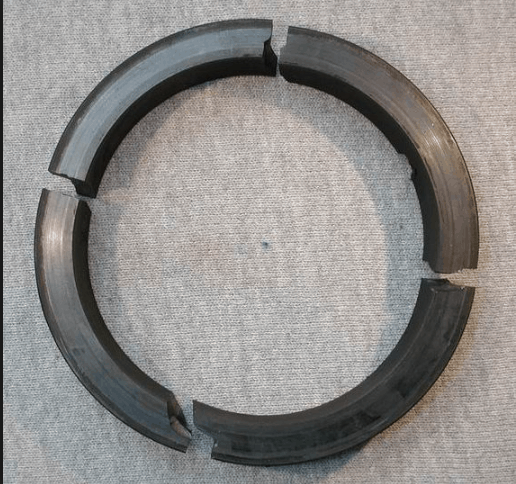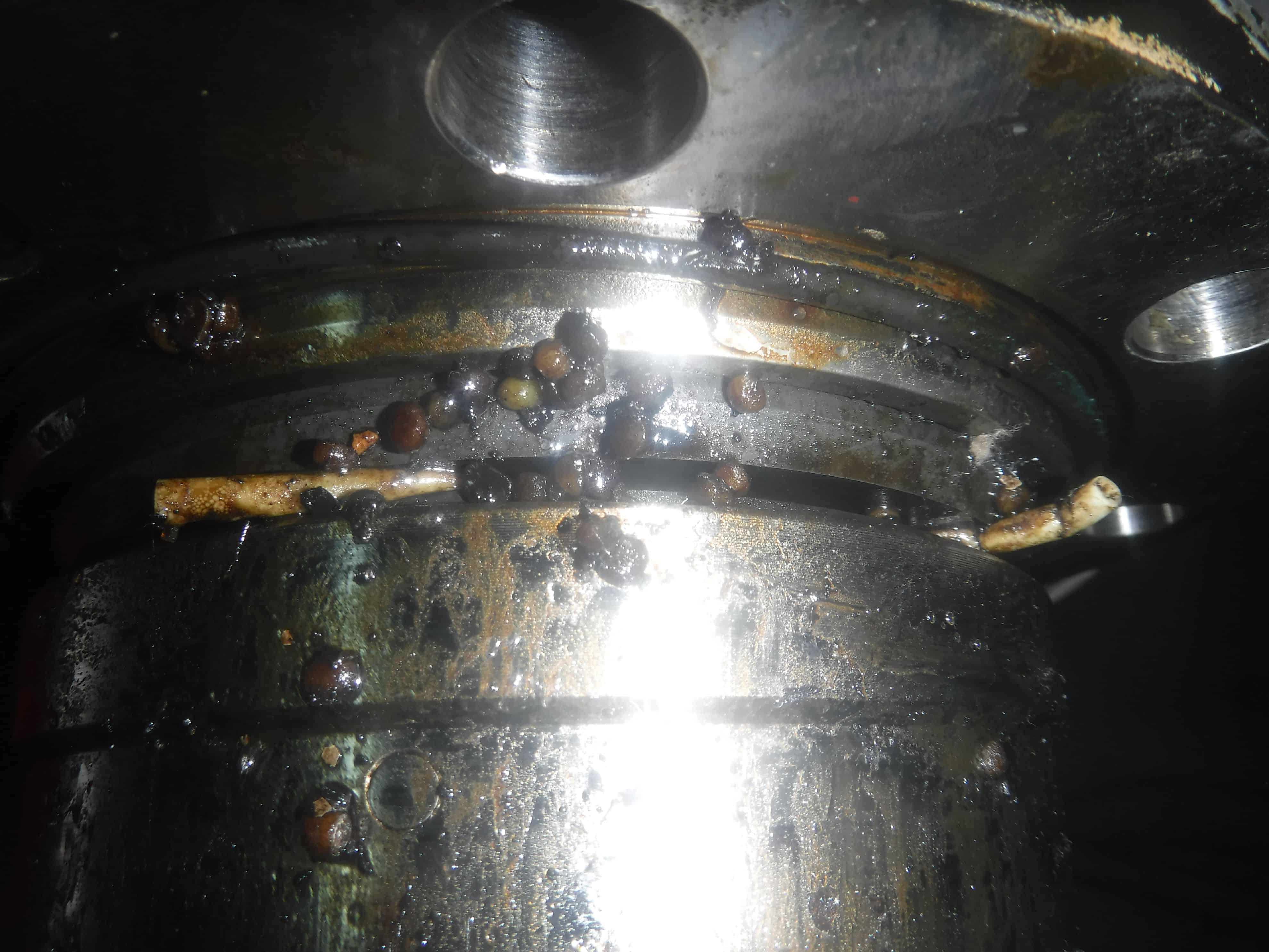Share this
Mechanical Seal Support Failure: Pictures and Common Root Causes in Northern Alberta
by Thomas Webster on Tue, Aug 24, 2021 @ 11:08 AM
Mechanical seals keep pumps from leaking by containing pressure while protecting the seal faces from the friction of the rotating pump shaft. The seal support system allows this to happen by lubricating, cooling, and flushing the seal. An effective mechanical seal increases efficiency, prevents pump failure, and keeps operators safe.
When a mechanical seal leaks or fails, there are many potential root causes. An experienced engineer can often identify the cause just by looking at mechanical seal support failure pictures.
Mechanical seals are the most common cause of pump downtime and failures, so it’s critical to understand the common failure modes and be able to recognize their causes. In this post, we’ll look at a few mechanical seal support failure pictures and explain what went wrong, why, and what you can do to prevent it.
Mechanical Seal Support Failure Pictures: Heat Checking

The radial fractures across the surface of the seal face above indicate failure due to heat checking. Mechanical seal heat checking can be identified by fine radial cracks in the seal face. The cracks are caused by excessive stress from the mechanical load and thermal expansion.
The cracks may be barely visible to the naked eye, so heat checking can go unnoticed until failure occurs and it’s too late to save the seal. The risk of heat checking increases with high temperatures and high-viscosity fluids. It is more common in brittle materials like tungsten carbide.
Heat checking can lead to:
- Leakage
- Seal face damage
- Seal failure
- Equipment component damage
What Causes Heat Checking?
Heat checking occurs when the seal is subjected to friction or temperatures beyond its safe operating conditions. Some of the possible causes include:
- Insufficient lubrication
- Excessively high fluid viscosity due to cold weather
- Pressure buildup impeding the flow of buffer/barrier fluids
- Friction from dry running
- Flashing (evaporation) at the seal faces caused by inadequate cooling
- A clog disrupting the flow of flush fluid
- Scaling on heat exchanger coils preventing adequate cooling
- Changes in process conditions causing increased fluid temperatures
How to Prevent Heat Checking
Heat checking can be prevented by avoiding the high-temperature and high-friction conditions that cause it. Follow these best practices to keep temperature and friction under control:
- Ensure the seal is sufficiently lubricated.
- Vent the seal chamber to remove vapour.
- Ensure the seal is properly set so it can rotate without contact.
- Choose the right seal flush plan to ensure the correct pressure and temperature.
Mechanical Seal Support Failure Pictures: Solids Contamination

In this photo, debris from a dirty, solids-containing fluid has entered the seal faces, which can cause blockage. This is an example of very large “particles,” but even small particles in a slurry mixture can build up and block the seal, obstructing the seal support system or even causing the seal to seize up when solid particles or debris build up around the rotating element.
.jpg)
Much like the previous photo, the above seal has a large solid particle stuck to the seal face. This has caused the seal to become stuck in the open position, resulting in leakage.
Even very small particles can cause leakage if they get stuck to the seal face. They can also wear leak paths into the seal face, increasing leakage even after the particles are removed.
What Causes Solids Contamination?
Solid particles and debris can contaminate the seal if the process fluid contains solids and the seal support system does not provide an adequate flush. This is one reason it is essential to select the right flush plan for the process fluid when designing the pumping system. If the process fluid contains solid matter, it should not be used as the flush fluid unless it is adequately strained or filtered.
How to Prevent Solids Contamination
To prevent blockage, leakage, and seal damage from solids contamination, the solids must be prevented from entering the seal in the first place. This can be accomplished by:
- Using a clean external flush (API Plan 32, for example) to isolate the seal from the process fluid
- Using a water quench to flush away solids (for example, API Plan 62)
- Using a dual seal with a seal flush system and a barrier/buffer fluid (for example, Plan 52, 53, or 54)
Look to the Experts for Mechanical Seal Support Failure Troubleshooting
When a mechanical seal fails, the problem has to be identified and corrected—fast. When performing failure analysis, mechanical seal support failure pictures aren’t always enough to go by. That’s why the best response is to have one of Edmonton Valve & Fitting’s experienced Field Advisors onsite to evaluate the problem and find a solution. Our Field Advisors are experts at troubleshooting mechanical seal failures and can quickly determine the root cause and help you implement corrective actions to ensure the problem doesn’t come up again in the future.
When you need replacement parts or repairs to seal components, you can count on the reliability of Swagelok products to ensure the continuous, smooth operation of all your mechanical seals. All our products are backed by Swagelok’s Limited Lifetime Warranty—one of the strongest in the industry.
Share this
- Fittings (82)
- Cost Savings (70)
- Valves (67)
- Fabrication (59)
- Services (41)
- Videos (33)
- Steam Systems (29)
- Training (27)
- Downloads (25)
- Resources (25)
- Sampling (24)
- Tubing (24)
- Field Advisors (18)
- Hoses (12)
- Oil & Gas (10)
- Regulators (9)
- Winterization (9)
- Gas Distribution (7)
- Hydrogen & Clean Energy (4)
- About Us (2)
- Measurement (2)
- February 2025 (1)
- November 2024 (1)
- October 2024 (2)
- August 2024 (1)
- July 2024 (1)
- June 2024 (4)
- April 2024 (4)
- March 2024 (2)
- January 2024 (3)
- December 2023 (2)
- November 2023 (3)
- October 2023 (2)
- September 2023 (3)
- August 2023 (3)
- July 2023 (3)
- June 2023 (2)
- May 2023 (4)
- April 2023 (2)
- March 2023 (2)
- February 2023 (3)
- January 2023 (2)
- December 2022 (1)
- November 2022 (1)
- October 2022 (2)
- September 2022 (5)
- August 2022 (3)
- July 2022 (6)
- June 2022 (4)
- May 2022 (3)
- April 2022 (1)
- March 2022 (2)
- February 2022 (3)
- January 2022 (4)
- December 2021 (4)
- November 2021 (6)
- October 2021 (3)
- September 2021 (5)
- August 2021 (9)
- July 2021 (5)
- June 2021 (7)
- May 2021 (7)
- April 2021 (4)
- March 2021 (3)
- February 2021 (3)
- January 2021 (2)
- December 2020 (3)
- November 2020 (3)
- October 2020 (2)
- September 2020 (3)
- August 2020 (3)
- July 2020 (3)
- June 2020 (3)
- May 2020 (3)
- April 2020 (2)
- March 2020 (3)
- February 2020 (3)
- January 2020 (3)
- December 2019 (2)
- November 2019 (3)
- October 2019 (3)
- September 2019 (2)
- August 2019 (3)
- July 2019 (2)
- June 2019 (2)
- May 2019 (3)
- April 2019 (3)
- March 2019 (3)
- February 2019 (2)
- January 2019 (3)
- December 2018 (2)
- November 2018 (2)
- October 2018 (4)
- September 2018 (2)
- August 2018 (3)
- July 2018 (3)
- June 2018 (2)
- May 2018 (4)
- April 2018 (3)
- March 2018 (3)
- February 2018 (3)
- January 2018 (4)
- December 2017 (1)
- November 2017 (4)
- October 2017 (4)
- September 2017 (4)
- August 2017 (5)
- July 2017 (3)
- June 2017 (4)
- May 2017 (4)
- April 2017 (3)
- March 2017 (5)
- February 2017 (4)
- January 2017 (4)
- December 2016 (3)
- November 2016 (3)
- October 2016 (4)
- September 2016 (3)
- August 2016 (4)
- July 2016 (2)
- June 2016 (2)
- May 2016 (2)
- April 2016 (4)
- March 2016 (2)
- February 2016 (3)
- January 2016 (4)
- December 2015 (4)
- November 2015 (4)
- October 2015 (5)
- September 2015 (2)
- August 2015 (4)
- July 2015 (5)
- June 2015 (2)
- May 2015 (3)
- April 2015 (5)
- March 2015 (3)
- February 2015 (4)
- January 2015 (3)
- December 2014 (5)
- November 2014 (4)
- October 2014 (4)
- September 2014 (4)
- August 2014 (4)
- July 2014 (5)
- June 2014 (4)
- May 2014 (4)
- April 2014 (5)
- March 2014 (4)
- February 2014 (4)
- January 2014 (4)
- December 2013 (3)
- November 2013 (4)
- October 2013 (5)
- September 2013 (4)
- August 2013 (5)
- July 2013 (4)
- June 2013 (3)
- May 2013 (4)
- April 2013 (5)
- March 2013 (2)
- February 2013 (3)
- January 2013 (5)
- December 2012 (3)
- November 2012 (3)
- October 2012 (5)
- September 2012 (3)
- August 2012 (4)
- July 2012 (4)
- June 2012 (1)
